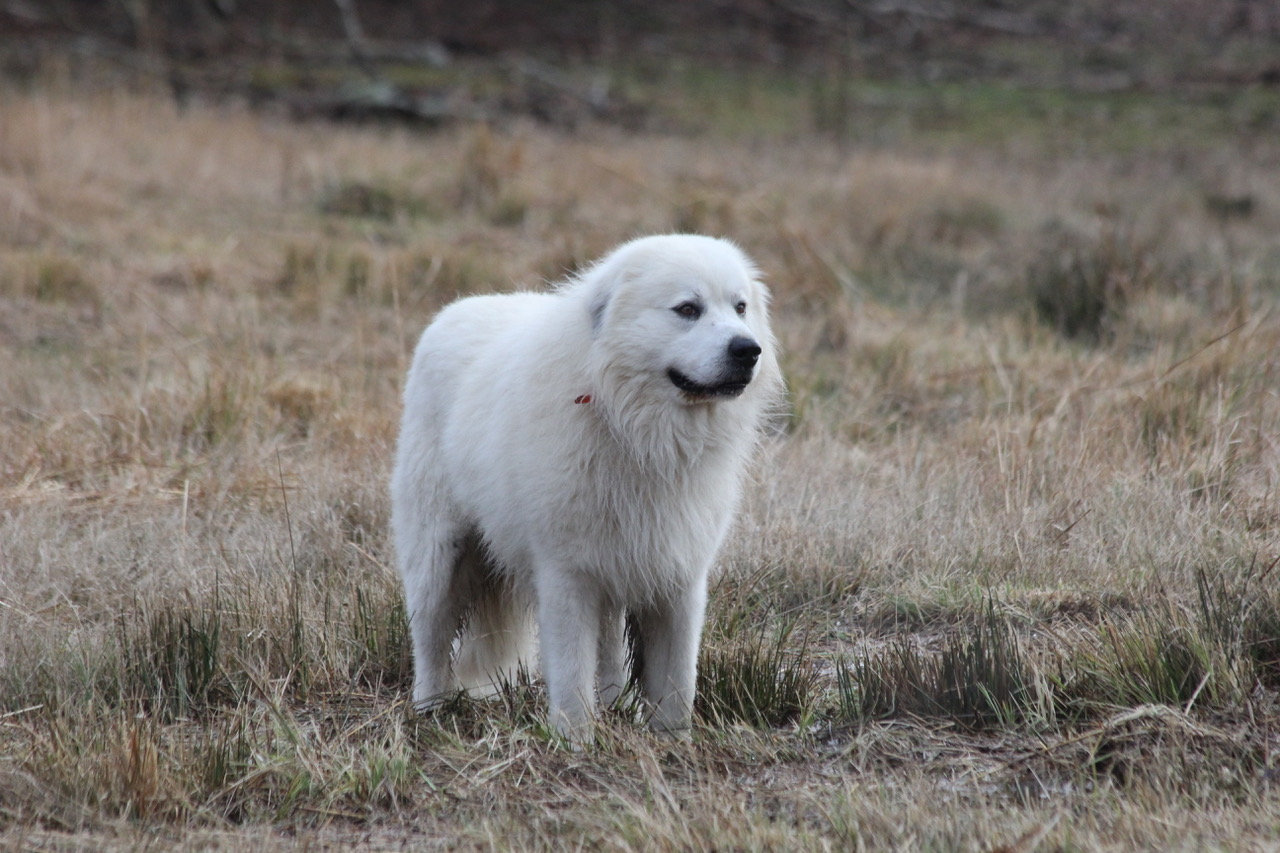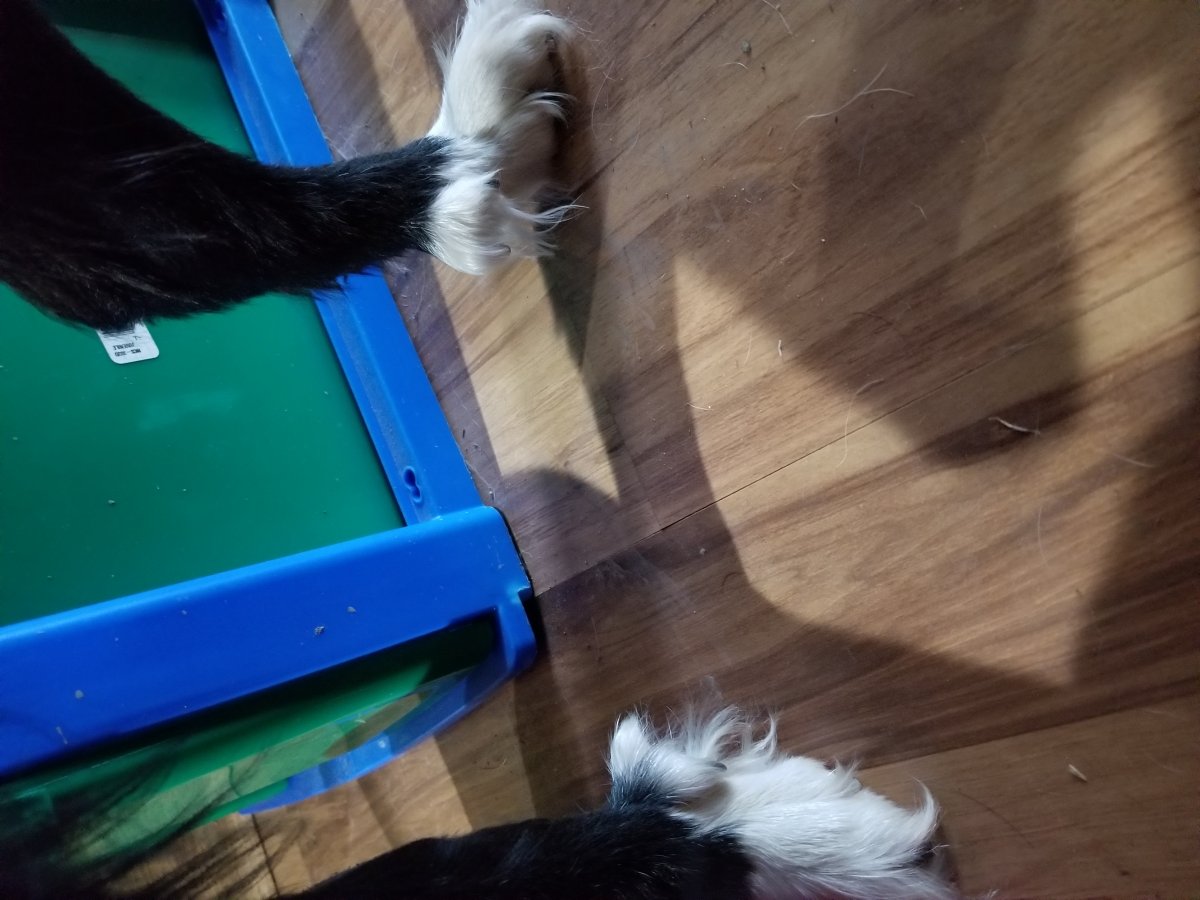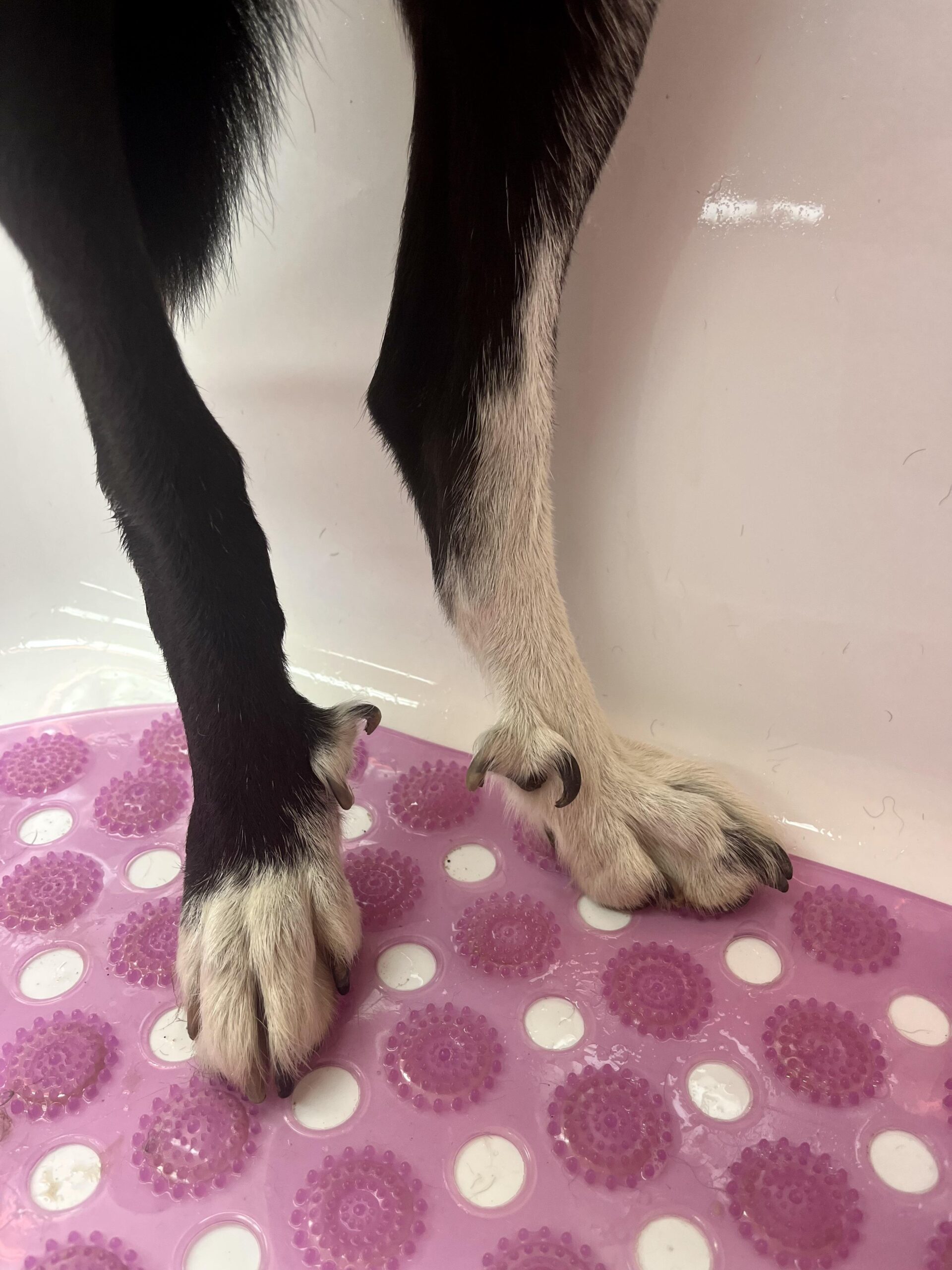No, Border Collies do not have double dew claws. Most of them have a single dew claw on their front legs.
Border Collies are highly intelligent and active dogs. They are known for their herding abilities and sharp minds. Many dog enthusiasts wonder about the unique features of this breed. One such feature is the presence of dew claws. Dew claws are small, extra toes located higher up on a dog’s leg.
Some breeds have double dew claws, but this is not common in Border Collies. Understanding the physical traits of your dog can help in their care and maintenance. In this blog, we will explore the specifics of Border Collie dew claws, their purpose, and how to care for them. Stay tuned to learn more about your furry friend’s anatomy!
Introduction To Border Collies
Border Collies are known for their intelligence and high energy. These dogs are often seen herding sheep with amazing skill. They are a favorite among dog enthusiasts due to their agility and trainability. But, do Border Collies have double dew claws? To understand this, let’s first explore their origin and physical characteristics.
Origin And History
Border Collies originated in the border region between Scotland and England. They were bred specifically for herding sheep. Their history dates back to the 19th century. These dogs were developed to be agile and intelligent workers. They are considered one of the smartest dog breeds in the world.
Physical Characteristics
Border Collies have a medium-sized, athletic build. They usually weigh between 30 to 45 pounds. Their coat can be rough or smooth, with various colors like black and white, red and white, or tricolor. Their eyes are expressive and can be brown, blue, or even one of each. Their ears can be erect or semi-erect, adding to their alert appearance.
As for their paws, Border Collies typically have single dew claws. Dew claws are small, extra toes found on the inside of the front legs. Some dogs have dew claws on their hind legs too. However, double dew claws are rare in Border Collies.
Here is a simple table to summarize their physical traits:
| Trait | Description |
|---|---|
| Size | Medium |
| Weight | 30-45 pounds |
| Coat | Rough or smooth |
| Colors | Black and white, red and white, tricolor |
| Eyes | Brown, blue, or one of each |
| Ears | Erect or semi-erect |
Border Collies are truly unique in their appearance and abilities. Their physical traits make them perfect for herding and agility tasks. Understanding these traits helps us appreciate why they are such a beloved breed.

Credit: www.reddit.com
Understanding Dew Claws
Many dog owners may wonder about the small, extra nails on their dog’s legs. These are known as dew claws. Understanding dew claws is important for dog care. Let’s dive into what they are and their functions.
What Are Dew Claws?
Dew claws are small claws located on the inner side of a dog’s leg. They are similar to human thumbs, yet they don’t touch the ground. Dew claws can be found on both the front and rear legs. In some breeds, these claws are present only on the front legs.
Double dew claws are an interesting feature in certain breeds. This means a dog has two dew claws on the same leg. This trait is not common but is fascinating to observe.
Functions Of Dew Claws
Dew claws serve various purposes for dogs. Here are some of the primary functions:
- Grip: Dew claws help dogs grip objects, especially when chewing bones or playing with toys.
- Stability: They provide extra stability while running, turning, or climbing.
- Traction: Dew claws can aid in gaining traction on slippery surfaces.
Understanding the role of dew claws can help you better care for your Border Collie. Regular trimming and checking for injuries are key to keeping your dog healthy and happy.
Single Vs. Double Dew Claws
Understanding the difference between single and double dew claws is crucial for dog owners. Dew claws are small, extra claws found on the inner sides of a dog’s paw. Some breeds have single dew claws, while others have double dew claws. This distinction can affect grooming and health care routines.
Differences And Similarities
Single dew claws are common in most dog breeds. These are usually found on the front paws and occasionally on the back paws. Double dew claws, on the other hand, are less common and typically appear on the back paws. Both types serve similar purposes but differ in structure and genetic origin.
| Aspect | Single Dew Claws | Double Dew Claws |
|---|---|---|
| Location | Front and sometimes back paws | Primarily back paws |
| Frequency | More common | Less common |
| Genetic Origin | Varies by breed | Specific to certain breeds |
Common Breeds With Double Dew Claws
Some breeds are known for having double dew claws. These breeds often have specific genetic traits that cause the extra claws.
- Great Pyrenees
- Briard
- Beauceron
- Icelandic Sheepdog
These breeds often use their double dew claws for stability and traction. The extra claws help them navigate rough terrain and maintain balance.

Credit: www.kuykendallbc.com
Border Collies And Their Dew Claws
Border Collies are active and intelligent dogs. They are known for their agility and herding skills. Understanding their physical traits is important for their care. One such trait is the presence of dew claws.
Typical Dew Claw Structure
Most dogs have dew claws on their front paws. These are small, extra claws located higher on the leg. They are not in direct contact with the ground. Dew claws can help with gripping objects or climbing.
Border Collies typically follow this pattern. Their front paws usually have a single dew claw each. Some may also have dew claws on their hind legs. This is less common but not unusual.
Incidence Of Double Dew Claws
Double dew claws are rare in Border Collies. This means having two claws on the same leg. It is more common in certain breeds like the Great Pyrenees. In Border Collies, it is considered an anomaly.
Double dew claws may be present on either the front or hind legs. They are usually found on the hind legs if they do appear. If a Border Collie has double dew claws, they may need extra care. These claws can get caught on objects or become injured more easily.
Genetics Behind Dew Claws
Understanding the genetics behind dew claws can be fascinating. Dew claws are the small, extra toes found on some dogs’ feet. In many breeds, they appear on the front legs, and in a few, on the hind legs. The presence of dew claws, especially double dew claws, can offer insights into a dog’s genetic makeup.
Inheritance Patterns
The inheritance of dew claws follows specific genetic patterns. These patterns are often dictated by dominant and recessive genes. In some breeds, the presence of dew claws is a dominant trait. This means that if one parent has dew claws, their puppies are likely to have them too.
In other breeds, the trait is recessive. This requires both parents to carry the gene for their offspring to have dew claws. Double dew claws are a rarer genetic trait. They usually require both parents to carry a specific gene combination.
Role Of Breeding
Breeding plays a significant role in the presence of dew claws. Selective breeding can enhance or diminish certain traits, including dew claws. Breeders often aim for specific traits to meet breed standards or preferences.
In some working breeds, double dew claws are considered advantageous. They can provide extra grip and stability. For Border Collies, breeders might select for traits that enhance their herding abilities, which could include dew claws.
Here’s a simple table summarizing the inheritance patterns:
| Inheritance Type | Parent Traits | Offspring Traits |
|---|---|---|
| Dominant | One parent has dew claws | Likely to have dew claws |
| Recessive | Both parents carry the gene | May have dew claws |
Breeding practices can be complex. They involve understanding genetics, health, and breed standards. Responsible breeding aims to produce healthy, well-tempered dogs with the desired traits, including dew claws.
Health Implications Of Dew Claws
Border Collies are known for their agility and intelligence. They are active dogs. Some Border Collies have double dew claws. Dew claws are the small, extra toes on a dog’s leg. They sit a bit higher up than the other toes. These can have health implications.
Potential Issues
Dew claws can cause various problems. They are prone to injury. They can get caught on things while running. This can lead to tears or breaks. Infection is another concern. If a dew claw gets injured, bacteria can enter the wound. This can cause pain and swelling.
Care And Maintenance
Proper care can prevent many issues. Regular trimming is essential. Long dew claws can easily break. Use a dog nail trimmer for this task. Clean the area around the dew claws. This helps prevent infections. Check for signs of injury or infection often. Redness, swelling, and limping are warning signs.
In some cases, dew claws may need removal. Consult a vet to discuss this. They can provide the best advice for your dog’s needs.
| Issue | Prevention |
|---|---|
| Injury | Regular trimming |
| Infection | Keep the area clean |
Taking care of your Border Collie’s dew claws is important. It helps them stay healthy and active.
Debunking Myths
There are many myths about Border Collies. One common question is about their dew claws. Do they have double dew claws? Let’s explore and debunk some myths.
Common Misconceptions
Some believe all Border Collies have double dew claws. This is not true. Most Border Collies have single dew claws on their front paws. It is rare to find double dew claws on this breed.
- Myth: All Border Collies have double dew claws.
- Fact: Most have single dew claws, especially on the front paws.
- Myth: Double dew claws are a sign of purebred.
- Fact: Dew claws do not indicate purebred status.
Evidence-based Facts
Research shows that dew claws in Border Collies are usually single. They are found on the front legs. Double dew claws are very rare in this breed.
| Type of Dew Claw | Presence in Border Collies |
|---|---|
| Single Dew Claw | Common |
| Double Dew Claw | Rare |
Some breeds, like the Great Pyrenees, are known for double dew claws. Border Collies are not among these breeds. If you see a Border Collie with double dew claws, it is an exception.
Important: Not all Border Collies will have dew claws on their hind legs. It is normal for them to lack these.
Understanding these facts can help you better care for your pet. Always check with a vet if you have concerns about your dog’s dew claws.

Credit: boards.bordercollie.org
Frequently Asked Questions
Do Purebred Border Collies Have Dew Claws?
Yes, purebred Border Collies typically have dew claws on their front legs. Some may also have them on their back legs.
What Breed Of Dog Has A Double Dewclaw?
The Great Pyrenees breed has a double dewclaw on each hind leg. These extra claws are a distinctive trait.
How To Tell If A Border Collie Is Purebred?
Check pedigree papers, verify with a breed standard, and consult a vet for DNA testing. Look for physical traits and behaviors specific to Border Collies.
Are Border Collies Double Coated?
Yes, Border Collies are double coated. They have a dense undercoat and a weather-resistant outer coat.
Conclusion
Border Collies usually do not have double dew claws. These dogs are agile and energetic. Single dew claws are common. Double dew claws are rare in this breed. Regular checks keep them healthy. Trim their nails to prevent issues. Proper care ensures a happy and active pet.
Consider consulting a vet for advice. Enjoy the unique traits of your Border Collie. They are loyal and intelligent companions.
